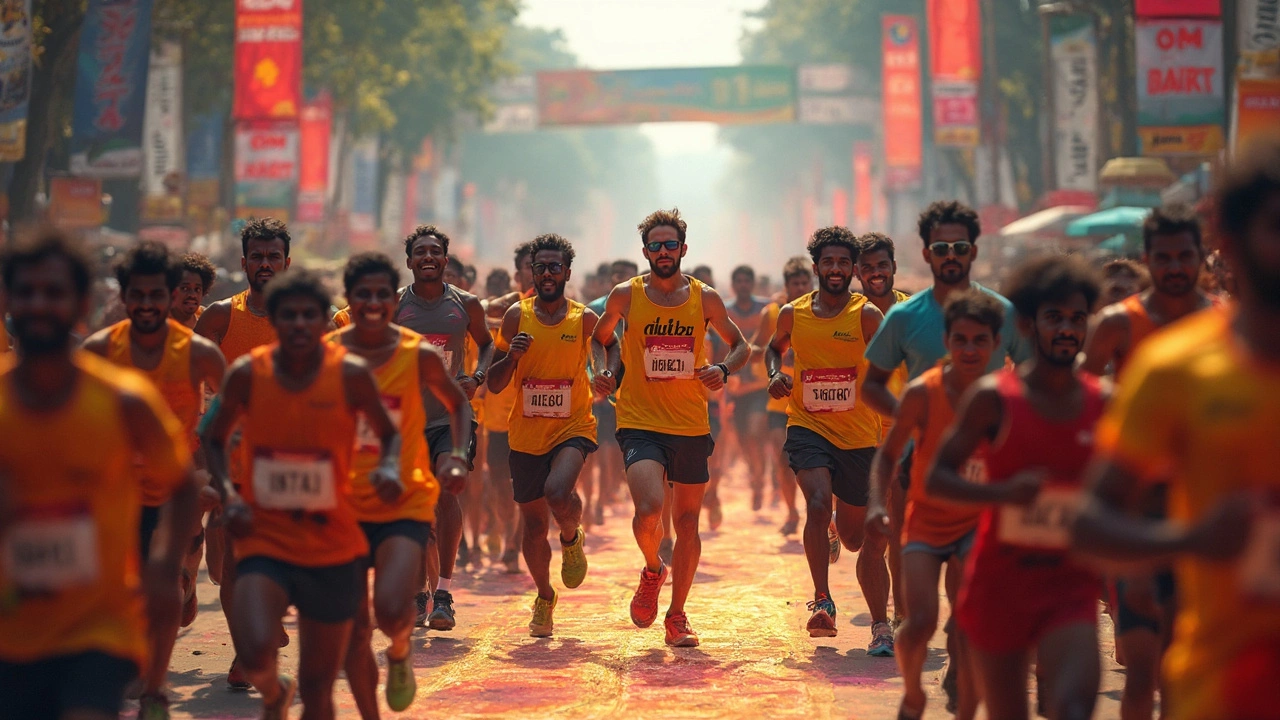So you’ve worked your way up to 11 miles, and you’re eyeing that half marathon finish line. That last 2.1 miles looks tiny on paper, but in your legs and lungs? That’s a different story. The big question: is running 11 miles really enough to tackle the full race?
Here’s something you might not know—lots of half marathon training plans actually top out at 10 or 11 miles for the longest run. It might sound a bit wild, but there’s a reason behind it. Building up to 11 miles gets you most of the way there without pushing your body so hard you end up hurt or burned out. But race day has its own set of surprises and challenges, and those last two miles can feel longer than you expect.
If you’re staring at the calendar and wondering whether you’re actually ready, you’re not alone. Runners everywhere ask themselves this same question. Let’s talk about what 11 miles really prepares you for, what to expect during those last tough minutes, and how you can set yourself up for a finish you’re proud of.
- Is 11 Miles Enough Mileage?
- How Race Day Changes Everything
- Getting Your Body and Mind Ready
- Tips If You’re Stuck at 11 Miles
Is 11 Miles Enough Mileage?
If you look at most popular half marathon training plans, you’ll notice a pattern: the longest run before race day is usually 10 or 11 miles. This isn’t by accident. The logic is pretty simple—after weeks of regular training, your body can handle those last 2.1 miles with a mix of adrenaline, rest, and race day excitement.
Your weekly running, plus that long run, helps build endurance. You’re teaching your muscles, joints, and even your brain how to deal with being on your feet for over an hour. So hitting 11 miles once or twice before the event puts you in the zone for the real thing. But don’t expect it to be easy. There’s a reason why nobody calls 13.1 miles a walk in the park.
There’s some science behind this, too. Studies say that if you can cover 80-85% of the race distance in your training—so, around 10.5 to 11 miles for a half marathon—you’re likely ready to cover the whole course. The thinking here is that the fitness gains from going further are pretty small compared to the extra risk of injury or overtraining.
Still, there’s a difference between finishing and feeling strong at the end. If your goal is to simply cross the finish line, building up to 11 miles is usually enough for most first-timers. If you’re chasing a personal best, want to avoid the dreaded wall, or hope to finish feeling fresh, you might want a few runs close to race distance or focus on things like running hills or dialing in your goal pace.
- Stick to three to four training runs a week, not just one long weekend run, so you’re getting that regular mileage.
- Don’t skip your rest days—your muscles need to recover to actually get stronger.
- Try a dress rehearsal: one of your long runs should be at race pace, with your race-day shoes, and even the same breakfast. Simulate the real thing so your body knows what to expect.
So, is running 11 miles enough? Usually, yes—for most people training for their first half marathon, that’s plenty to get ready, as long as you’re following a balanced plan and not just winging it. But every runner is a little different, so pay attention to how you feel as those long runs get longer.
How Race Day Changes Everything
If you think running 11 miles in training tells the whole story, race day will prove otherwise. There’s a wild energy in the air—crowds, adrenaline, and hundreds of runners buzzing with nerves. That extra push can help you cover ground you didn't hit in your training, but it also messes with your pacing, your gut, and sometimes your head.
On race day, something called the “race effect” kicks in. Your body naturally gives a little more because of excitement and the energy around you. According to a study in the Journal of Strength and Conditioning Research, runners often perform 5 to 10% better on race day compared to a solo training run. So, if your longest run was 11 miles, you can likely power through those last two miles that seemed impossible alone.
But here’s the twist: racing often means going out faster than you planned, usually because it feels easier at first (thanks, adrenaline!). It’s easy to burn out early, with the toughest part usually coming after mile 10. Plenty of folks crash at mile 11 or 12 because they got carried away early on.
There’s more at play than speed. Everything from pre-race nerves to unpredictable weather can hit you. Some of the big differences between training and race day include:
- Shoes and clothes: You’ll see people break out new gear. Spoiler—don’t do it. Stick with what you’ve already run those 11 miles in.
- Hydration spots: Water and sports drinks are everywhere, but you might not be used to drinking mid-run. Practice with your race-day approach before the big day.
- Fuel: You’ll be surprised how different gels or bars taste (or upset your stomach) under pressure.
- Crowds: You can get boxed in at the start or stuck weaving around people. Figure out your starting pace and don’t chase the pack if it’s too fast.
Here’s a quick table laying out how a typical half marathon differs from your solo 11-mile training run:
| 11-Mile Solo Training Run | Race Day Half Marathon | |
|---|---|---|
| Adrenaline | Normal | High—often masks fatigue till later |
| Support | Minimal/none | Crowds, pacers, volunteers |
| Hydration | As needed, your own bottle | Multiple aid stations, new options |
| Pace | Your usual | Often faster at the start |
| Finish Line Energy | None | Huge boost for the last mile |
All these little things build up and can make those extra 2.1 miles both easier—thanks to the energy—and harder—thanks to new stress and temptations to go too fast. Keep your head in the game, and remember that even with the best half marathon training, there are always a few surprises on race day.

Getting Your Body and Mind Ready
Running a half marathon is just as much about what’s in your head as what’s in your legs. Even if you can run 11 miles, you want to do more than just “survive” those last tough moments. You want to finish strong, not crawl across the line. So how do you prep both your body and your brain for that leap?
First off, your body needs to be used to running for a long time. The long run is key, but things like fueling, hydration, and recovery can make or break your race. About 60% of runners report hitting a wall due to messed-up fueling or hydration, not just fitness. So don’t just wing it—practice what breakfast works, what drinks sit well, and when you need to take those gels or chews. Here’s a quick look at how your body burns energy during longer runs:
| Distance Run | Main Energy Source | Common Problems |
|---|---|---|
| 0-6 miles | Stored carbs (glycogen) | Minor fatigue |
| 6-11 miles | Glycogen + start burning fat | Stomach issues, dehydration risk |
| 11-13.1 miles | Mostly fat, low glycogen | "The wall," cramping, mental fatigue |
When it comes to your mind, race day nerves are real. The excitement and the crowd can pump you up, but doubt has a way of sneaking in right around mile 11 or 12. That’s where mental strategies matter. I always make a mental playlist of things I want to tell myself when I start feeling sluggish, like "Remember your training" or "Just reach that next lamp post." Some experts swear by mantras. As writer and marathoner Hal Higdon says,
“The human spirit is stronger than anything that can happen to it.”
Try visualizing yourself pushing through the finish, and practice this ahead of time. Real talk: most people lose steam in the last few miles, but your brain can trick your body into keeping strong form when your legs are screaming.
Here are some practical tips to boost both body and mind for race day:
- Test your race-day outfit and gear during at least one long run—no new shoes!
- Fine-tune your breakfast and fuel timing before your last few training runs.
- Get good, solid sleep for several days leading up to the race.
- Plan your mantras or focus points before you even step to the start line.
- Don’t skip lifting or mobility work, even once a week, to support joint health.
Getting ready isn’t just about mileage. Dialing in your food, sleep, gear, and headspace means you’re giving yourself every shot at that strong, happy finish—no matter how tough those last miles get.
Tips If You’re Stuck at 11 Miles
Getting stuck at 11 miles happens to tons of runners. Sometimes your body refuses, sometimes your schedule does. But you don’t need to panic—you can still cross that half marathon finish line with the right tweaks and mindset.
First up, don’t stress if your longest run tops out at 11 miles. Most runners can tap into race-day excitement, the energy from other people, and well-timed fueling to carry them those final miles. Here’s the reality of the last 2.1 miles for a lot of folks:
| Distance (Miles) | Perception During Training | Perception on Race Day |
|---|---|---|
| 11 | "Challenging but manageable" | "Familiar territory" |
| 12-13.1 | "Uncertain, sometimes daunting" | "Tough, but crowd and adrenaline boost determination" |
Now, here’s what you can do if you’re stuck at this mileage:
- Mental Rehearsal: Imagine yourself getting through those last two miles. Repeating a mantra—like “one step at a time”—sometimes tricks your brain when your legs want to quit.
- Run/Walk Intervals: Don’t be afraid to sprinkle short walk breaks in those last miles. Many seasoned runners use run/walk, and their finish times are often just as good—or better—than those who run nonstop.
- Fuel Early and Often: Try eating 30-60 grams of carbs per hour (think a gel packet or some chews every 45 minutes). Hydrate every couple of miles. If you forget to fuel, your energy crashes right around where you got stuck in training.
- Race Day Plan: Start conservatively. It’s easy to go out fast with the race crowd, but you’ll regret it later. Pace yourself so you have some gas left for those last two miles.
- Simulate Race Conditions: Wear the gear and shoes you’ll use on race day at least once for a long run—nothing new on race day. If possible, schedule a walk/run through the actual course or a similar terrain.
- Rest and Taper: Don’t try to cram a 13-mile run right before the race. It’s better to be rested than “perfectly” trained. Two weeks out, cut mileage and let your body recover for maximum energy.
I tell my daughter Kavya: most of running is in your head. If you’ve handled 11 miles, you’re almost there. The last section is about grit, smart pacing, and using everything you’ve practiced—plus a bit of race-day magic.





